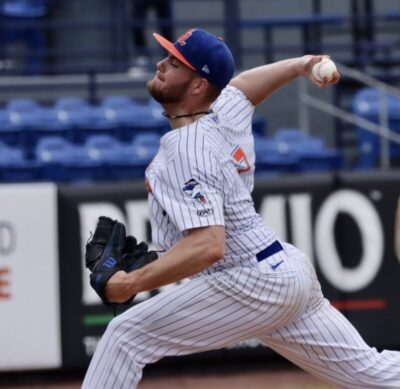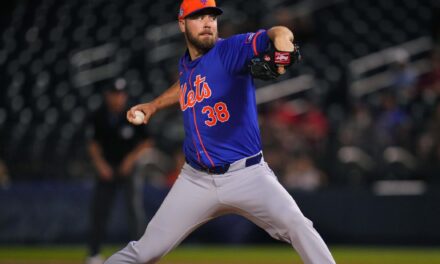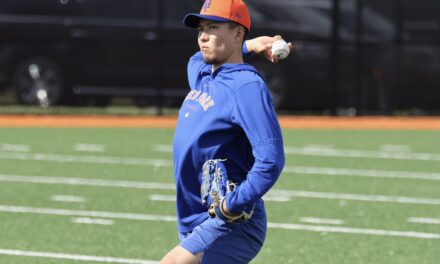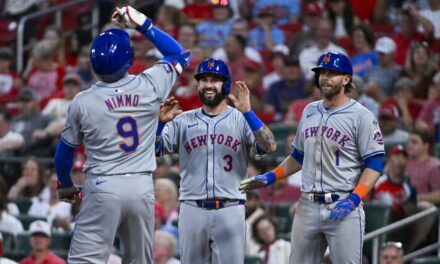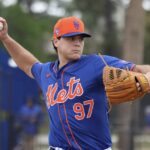Welcome to the Rat Race.
The Mets’ 2021 draft class is thriving in the Minor Leagues, and are fast-tracking their way to the Major Leagues. Grant Hartwig, who almost didn’t play professional baseball, made his MLB debut, both Mike Vasil and Nate Lavender are in Triple-A, and Calvin Ziegler has recorded 13.6 strikeouts per nine in St. Lucie. However, out of the entire draft class, Christian Scott may be the most impressive. After he started the season with an oblique injury, Scott was phenomenal for the Brooklyn Cyclones, pitching to a 2.28 ERA in six starts. This performance earned Scott a recent promotion to Binghamton, where he has continued his stellar start. His current notable numbers include 19.2 innings at the Double-A level, eight hits allowed, four walks, and 23 strikeouts to go along with a dominating 1.37 ERA.
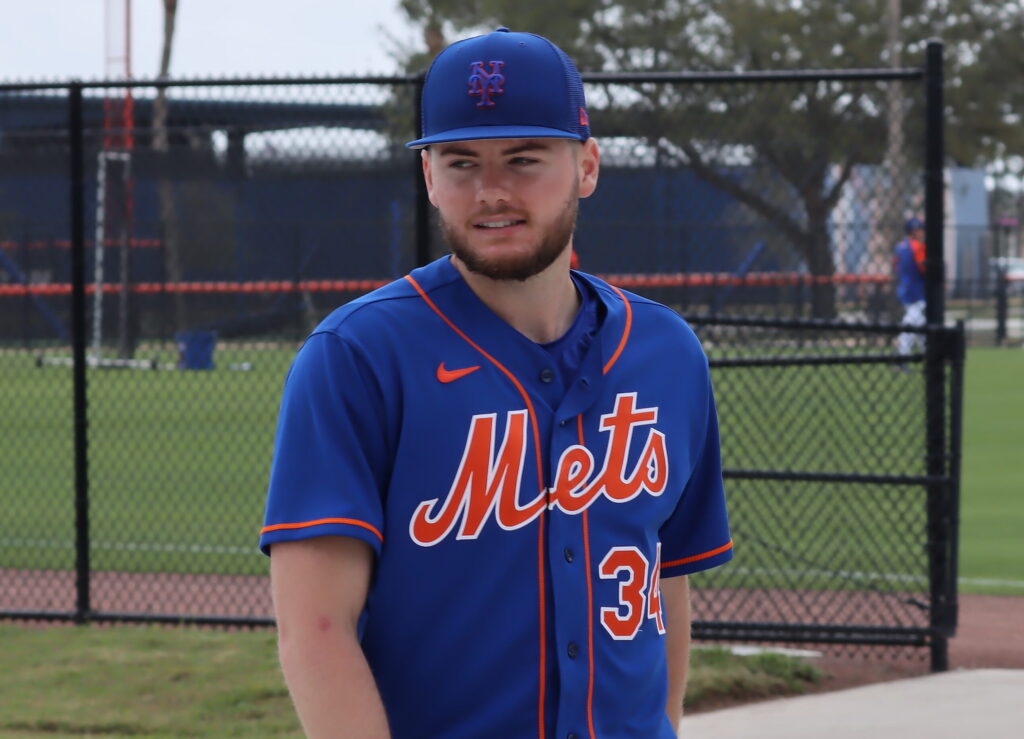
Christian Scott, Photo by Ed Delany of Metsmerized
Conversion Conversation
Scott was a reliever at Florida and had a promising profile. The Florida native commanded a mid-90s fastball with impeccable control, leading to a high strikeout rate and low walk rate. While relievers at his age typically have higher walk rates than starters, he had a 1.5 BB/9 in 54 innings of relief (9 BB) at the University of Florida. While he was dominant as a reliever, the Mets converted him to a starter in 2022, and Scott hasn’t looked back. In 10 starts this season, the right-hander boasts nearly a 7:1 K: BB ratio, demonstrating great control with all four of his pitches.
Repertoire Recap
Scott’s best pitch is his fastball velocity, which has reached 98 mph in 2023. His four-seam fastball is similar in shape and velocity to Tylor Megill, but his low release combined with intelligent location consistently up in the zone gives it a flat vertical approach angle, leading to elite swing and miss rates. Scott relies heavily on the fastball, and throws it over 50% of the time.
The 6-foot-4 starter mixes in his slider 25% of the time to keep batters off his fastball. The slider is a mini-sweeper shape with a few inches of glove-side movement but not enough to be considered a sweeper. The movement profile isn’t anything ‘sexy’ but he gets the pitch to work by keeping the average velocity in the mid-80s. It induces ground balls at a high rate, but hasn’t gotten the same swing-and-miss rate as the fastball.
Another fantastic start for RHP Christian Scott (@chscott8) for Double-A Binghamton
7 IP, 2 H, 0 R, 2 BB, 6 K. 106 pitches (68 strikes)
Scott set a career high in innings and pitches thrown tonight. His Double-A ERA stands at 1.37 through three starts with 23 K’s in 19.2 IP pic.twitter.com/7noKb3Sn9v
— Joe DeMayo (@PSLToFlushing) June 29, 2023
The game-changing pitch for Scott this season, however, has been his change-up. At the start of the season, he eliminated over five inches of vertical break on the pitch, and is using it at a higher rate while maintaining excellent in-zone rates.
Overall, Scott’s fastball makes him elite, and it has been his primary strikeout pitch this season. The slider and changeup are good compliments for righties and lefties, respectively, but the slider isn’t quite as impressive yet. Scott also throws a curveball, which could make a great get-me-over strike pitch in the future.
If it ain’t broke, don’t fix it
For Scott to continue at the red-hot pace, he really should mirror his pitch usage at every Minor League level. However, there is a difference between being successful in Double-A and being either successful in the MLB. As we’ve seen with the Mariners and Dodgers in 2023, prospects’ statistics in the minors aren’t always telling, and they might be ready to jump from Double-A to the big leagues. Examples in 2023 have been Bryan Woo, Bryce Miller, and Emmet Sheehan, who all have slightly better fastballs than Scott (higher velocity, lower release heights, and/or more vertical movement).
For Scott to make up for a flat fastball, he needs to make his secondaries elite. His change-up has already taken massive strides, but he still needs to work on his slider. Improving his slider would increase his total whiffs and result in lower his fastball usage, making his pitching sequence more unpredictable. He could refine his slider to add more sweep at the same velocity or pursue a more gyro-shaped slider at a higher velocity, likely increasing the miss percentage due to the velocity increase. The better of the two options is the faster gyro shape as that pitch is easy to command and wouldn’t require much change in terms of how he is currently throwing it. After all, Scott shouldn’t be changing much right now. The crucial thing for him to keep is his elite command as that will propel him to Queens before long regardless of other changes he does or doesn’t make.


